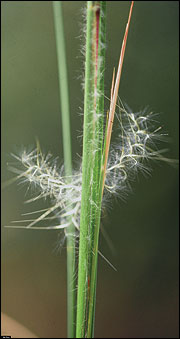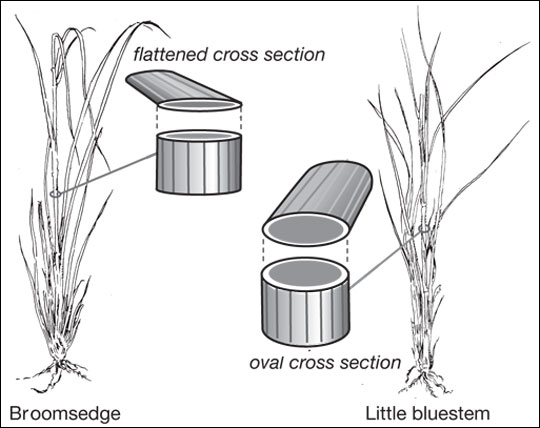Broomsedge
- Andropogon virginicus
- Broomgrass, Broomsage, Broomsedge bluestem, Broomstraw, Sage grass, Yellow bluestem
Grass




 Several stems may arise from each clump of broomsedge. They will turn yellow-tan in the fall.
Several stems may arise from each clump of broomsedge. They will turn yellow-tan in the fall.
©James H. Miller, USDA-NRCS Plants Database
Broomsedge seeds are small and hairy.
©James H. Miller, USDA-NRCS Plants Database
Description
This native warm-season grass is often confused with little bluestem. Compared with little bluestem, broomsedge stems are the more flattened and more densely leafed. Also, broomsedge in the fall/winter is typically yellowish tan, while little bluestem has a bronzy color. It is usually no more than 2 feet tall at maturity. Seeds are light and fluffy. Dense stands are often indicative of acid soils, phosphorus deficiency or overgrazing. Lime and fertilizer application may cause broomsedge to decline or disappear.
Use by bobwhites
Broomsedge's clumpy growth and fine leaves and stems make it an excellent grass for nesting, and the height is preferred for roosting. Stands of broomsedge tend to be "weedy," supporting a diverse mix of annual plants that provide further benefits for bobwhites.

Compare the cross section of a broomsedge stem with that of little bluestem. Broomsedge is more flattened.